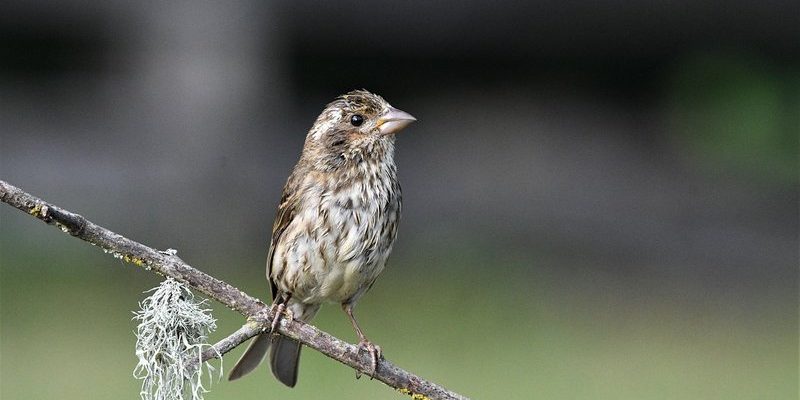
The term “threatened” means a species is likely to become endangered in the near future, while “endangered” refers to species that are at immediate risk of extinction. It’s essential to understand the differences and why it matters. With so many pressures on their habitats—from climate change to urbanization—finches need our help now more than ever. Let’s take a closer look at the challenges these little birds face and how we can make a difference.
What’s Happening to Finch Populations?
Finch populations have been declining for various reasons. Many species are losing their habitats due to deforestation, urban sprawl, and agricultural development. Imagine your favorite park being turned into a shopping mall. That’s what’s happening to the natural environments where finches thrive. When their homes disappear, so do their chances of survival.
Additionally, climate change is altering the places where finches can live. Changes in temperature and weather patterns can disrupt their food sources and breeding cycles. Some finches depend on specific plants for food and nesting, and when those plants can’t thrive, neither can the birds. The impact of climate shifts might feel like ripples on a pond, but for finches, it can mean survival or extinction.
Are All Finches at Risk?
Not all finch species are equally threatened. Some are doing relatively well, while others struggle significantly. For example, the California Goldfinch has a stable population, largely thanks to conservation efforts and habitat preservation. In contrast, the Laysan Finch from Hawaii has faced steep declines and is classified as endangered.
Here’s the thing: it’s not just about numbers. Each species plays a unique role in its ecosystem. Losing one species can have a domino effect, impacting other plants and animals. So even if one finch is doing well, it’s important to support all species, especially the ones at risk.
Understanding the Threats
When we talk about finches being threatened or endangered, we need to understand the root causes. Habitat destruction is at the forefront. As we expand cities and farmland, we encroach on the living spaces of many species, including finches. Without adequate habitats, these birds struggle to find food and reproduce.
Another significant threat is invasive species. These non-native plants and animals compete with finches for resources, often leading to the decline of native species. For example, invasive plants can choke out the native flora that finches rely on for food, while introduced predators can directly threaten their nests.
And let’s not forget about climate change. Increased temperatures and unpredictable weather patterns can disrupt food availability and breeding schedules. All of these factors combine to create a challenging environment for finches.
Conservation Efforts for Finches
Thankfully, there are numerous conservation efforts underway to help finches. Organizations and local communities are stepping up to protect habitats and educate the public about the challenges these birds face. They work on restoring natural areas, planting native vegetation, and creating bird-friendly spaces in urban areas.
For example, many parks and nature reserves now focus on planting native plants to provide food and nesting sites for finches and other wildlife. Educating the public about the importance of these birds can also foster community involvement. When people understand how vital finches are to the ecosystem, they’re more likely to support conservation initiatives.
Additionally, some agencies monitor finch populations to track changes over time. This data helps determine which species need attention and informs conservation strategies. The more we know, the better equipped we are to help.
What You Can Do to Help
You might be wondering, “What can I do to help finches?” Well, there are plenty of things! Here are a few simple steps:
- Plant native species: Incorporate native plants in your garden to provide food and shelter for finches.
- Provide clean water: Set up birdbaths or shallow dishes with fresh water to help birds stay hydrated.
- Support conservation organizations: Consider donating to or volunteering with local wildlife organizations focused on bird conservation.
- Spread the word: Talk to your friends and family about finch conservation. The more people know, the more we can work together to make a difference.
Every small action can add up to significant change. By working together, we can help protect these charming little birds for future generations.
The Role of Education and Awareness
Education plays a crucial role in finch conservation. By spreading awareness about the threats these birds face, communities can rally together to protect them. Schools, nature centers, and local organizations can contribute by hosting workshops, lectures, and birdwatching events.
When people learn about the challenges finches encounter, they’re more likely to take action. Understanding how interlinked the health of our ecosystems is with the well-being of these birds fosters a sense of responsibility. Here’s the thing: it’s not just up to scientists and conservationists; everyone can make a difference.
Moreover, social media can be a powerful tool in raising awareness. Sharing photos, stories, and articles about finches can amplify their voices and inspire others to get involved. It creates a community of people rallying for a common cause, helping to keep the conversation alive and focused on action.
Final Thoughts
The fate of finches hangs in a delicate balance. While some species are thriving, many face the threat of extinction. The combined effects of habitat loss, climate change, and invasive species make it crucial for us to take action.
By understanding the challenges finches face and taking simple steps to support conservation efforts, we can make a real difference. So, the next time you hear a finch chirping, remember that its song is a reminder of both beauty and urgency. Together, we can protect these incredible birds and ensure they continue to brighten our lives.

